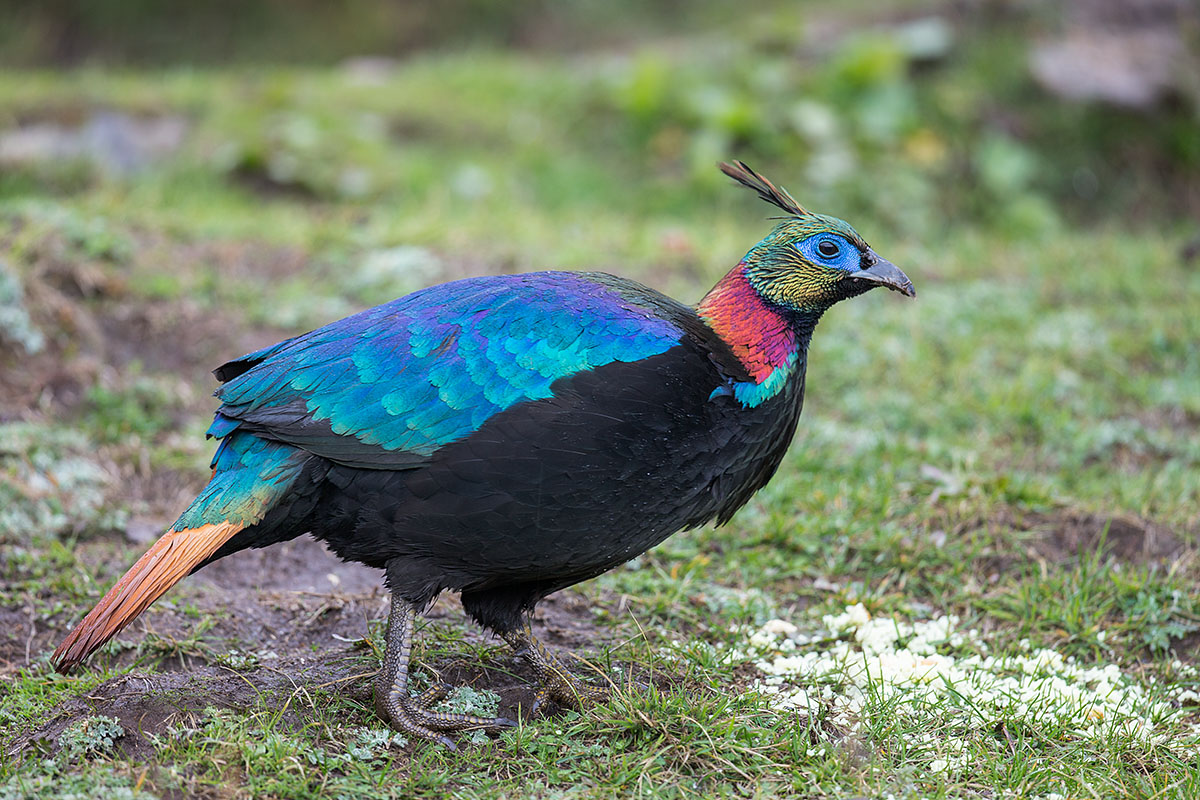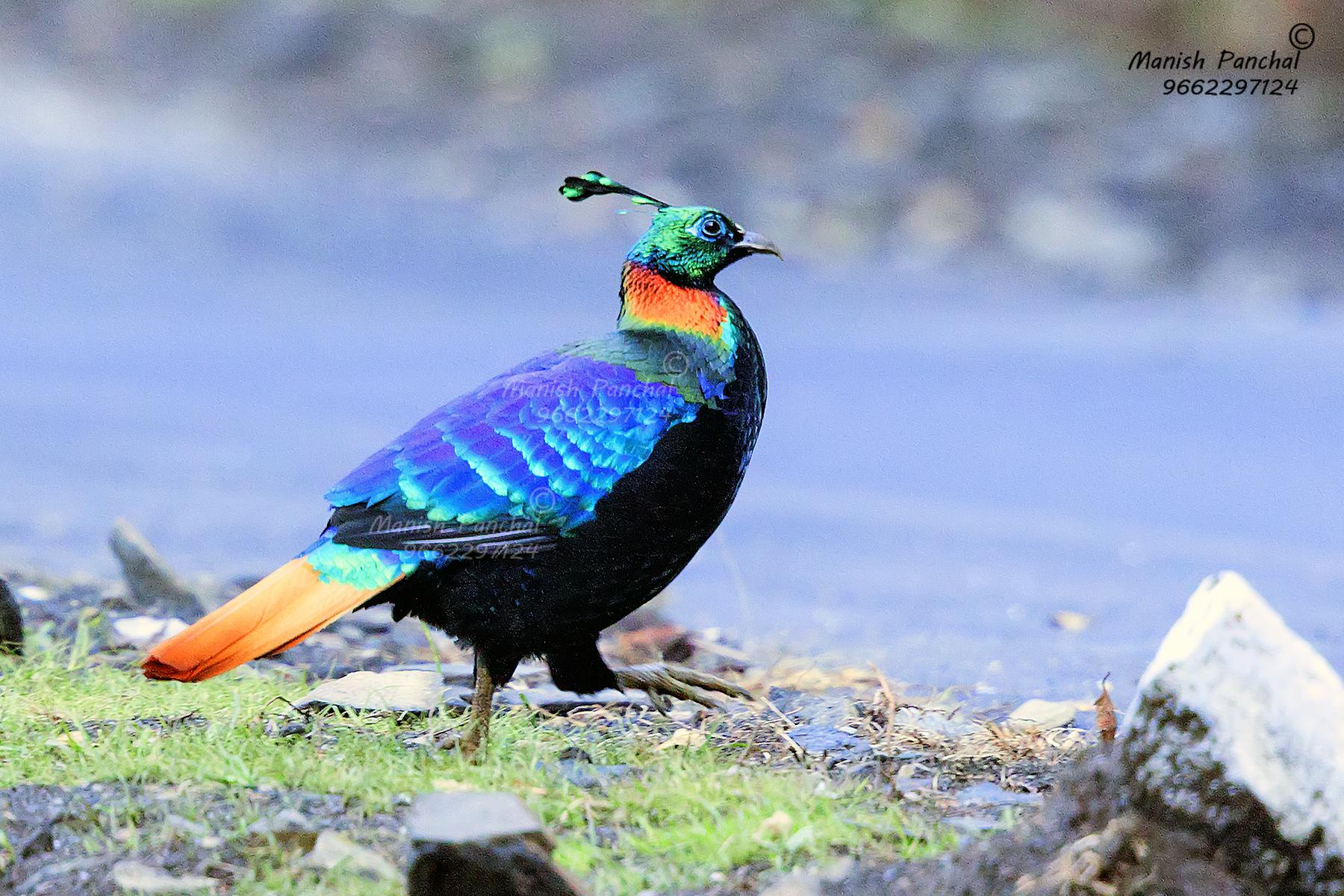

They are not recommended for warmer climates.ĭescription: Males have a tall, beautiful crest, reminiscent of the peacock. Impeyans are very tolerant of the cold weather and will need plenty of shade during the summer to protect them from extreme heat. Impeyans are a high-altitude species, between 2,100 and 4,500 meters above sea level. They prefer grassy meadows in the summer and forested areas in the winter. Range: Northern India, Western China, Afghanistan, Nepal - the Himalayas
#The himalayan monal Patch
Subspecies: There may be one subspecies in Northern India that lacks the visible white patch on the rump while the bird is in flight, but continues to be debated among experts. Add Impeyan Pheasants to your flock and your friends will be jealous for sure. Impeyan Pheasants are extremely beautiful birds. They are also called Himalayan Monal Pheasants. A distinct blue patch around the eyes characterises the species.Impeyan Pheasants for sale September until sold out for the year usually in December. The tail feathers of the male bird are consistently metallic reddish-brown coloured, ending at a darker shade towards the tips. With a white back and black underparts, the bird exposes a prominent white patch on its rump when in flight. The Himalayan Monal is also known as the ‘nine-coloured bird’ owing to the iridescent metallic-coloured plumage on the neck and wings of the adult male bird. The average female of the species is a tad smaller and lighter than its male counterpart. An average bird would measure to around 70 cm in length and between 4.4-5.2 lbs in weight, and it is considered to be a somewhat large bird. The Himalayan Monal is one of the most stunning pheasants due to its distinctive iridescent metallic-coloured plumage. At other times they might also be spotted in small groups, or large conveys, while practicing communal roosting. These pheasants usually roam single or in pairs, especially during their breeding season between April and August. The shrill curlew-like whistle of the Himalayan Monal is quite distinctive. Their tolerance to the snow is an added bonus to their lifestyle.

These pheasants have heavy bills which they expertly use for digging out subterranean insects and tubers from the slopes as well. The Himalayan Monal spends most of its day foraging for insects, berries, shoots, and seeds.

( Koshy Koshy / Flickr) Behaviour of the Himalayan monal In general they maintain an altitude between 2,000 and 4,500m above the sea level. In the summers they move up to 16,000ft, wandering the grassy slopes above the tree-line. In the winter months they come down to 6,500ft. The Himalayan Monal is a high-altitude bird that practices altitudinal migration as the weather changes. Their preferred habitat also features rolling grassy slopes and cliffs, and an extensive understory of bamboo and rhododendron. These pheasants are typically found residing in the oak-conifer forests of cool upper temperate regions, such as the Himalayan hills. As a result, they have been included in the IUCN Red List of Threatened Species (2016), albeit as a species of ‘Least Concern’ (LC). The bird is almost extinct in Afghanistan, and their numbers are steadily reducing in other areas due to various anthropological factors. These birds are endemic to a vast belt including, Bhutan, China, Nepal, Pakistan, India (states of Jammu and Kashmir, Himachal Pradesh, Uttaranchal, Sikkim and Arunachal Pradesh), and even Myanmar. The scientific name of the bird is Lophophorus impejanus and it belongs to the Phasianidae family of the Galliformes order. The Himalayan Monal, also known as the Impeyan Pheasant or Impeyan Monal, is a variety of pheasant found in the hilly forests of the Himalayan region.


 0 kommentar(er)
0 kommentar(er)
